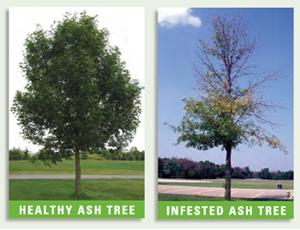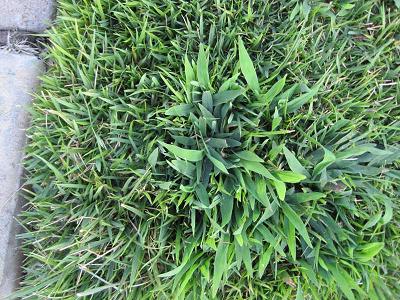 When the snow melts, your first impulse may be to get working on your lawn – but hold on your horses ………. starting too soon may actually do more harm than good. If your lawn feels spongy underfoot, that means that it is still too early. Wait until the ground feels firm. That’s the time to start working on your lawn.
When the snow melts, your first impulse may be to get working on your lawn – but hold on your horses ………. starting too soon may actually do more harm than good. If your lawn feels spongy underfoot, that means that it is still too early. Wait until the ground feels firm. That’s the time to start working on your lawn.
The secret to a grassy yard all year-around are the following easy 8 easy steps:
1. Clean up the yard Remove all fallen stems, branches and leaves by gently raking your lawn and gathering all the debris. If there is more than 1cm (1/2 in.) of brown, matted blades of grass located where the soil meets the roots of your lawn, you will need to dethatch using a fan rake (if you have a large space, you may want to rent a motorized dethacher from RONA or Home Depot).
2. Curb local critters Check the yard for any evidence of tunneling moles: little raised hills and underground tunnels in your lawn. Fix the damage by tamping down tunnels and applying blood meal (you can find it in any garden centre). True to its name blood meal is a dry, inert powder actually made from animal blood as a slaughterhouse by-product. It is one of the highest non-synthetic sources of nitrogen used as a composting activator as well as it can be spread on gardens to deter animals. Used on your lawn it should discourage repeat visits from moles. Once the weather warms up, getting rid of the grubs moles feed on will also control future tunneling.
3. Aerate Buy or rent a manual or power aerator (tip: share the cost with your neighbours!) to remove little plugs of compacted soil from your lawn, so that air, water and nutrients can flow to the root zone, improving your lawn’s look and overall health. Aeration is especially essential in high-traffic areas, such as common paths and in areas with clay-based soil (which is most of Mississauga).
4. Top dress and reseed This step will make your lawn thick and lush – and, as a result, naturally weed resistant. “Top dressing” means spreading an even layer of of soil across your lawn, filling holes and leveling out uneven spots. Don’t cover the blades on your grass entirely in the process though! Then spread a good quality grass seed across your lawn (read the labels on the package carefully to make sure that the grass seed you apply is properly suited to the amount of light in your yard – sun or shade). Rake it gently (there is no need to cover it again with more soil), and water very well. Grass seed need soil that is warmer than 15 deg. C to germinate or you will be just wasting seed or money. A great and simple way to check the soil’s temperature is to stick a kitchen meat thermometer in the ground and measure the temperature…. 
5. Fertilize Apply lawn fertilizer that’s high in nitrogen (the first number on the bag) early in the season. Choose a “slow release” formula so your lawn gets a consistent feeding of nutrients over time, while limiting the release of of fertilizer into the water with rain and preventing fertilizer’s burns on your lawn. My favourite is Scott’s Turf Builder Pro.
6. Water wisely Lawns love water. The average lawn needs at least 30 to 40 mm (11/2 to 2 in.) of water per week. If mother nature isn’t providing enough in the form of a rain, you will h ave to supplement it with a hose and a sprinkler. Water regularly during the early morning hours when it’s cooler. To figure out how long you need to water your lawn do a simple experiment the first time you are watering: set out a wide, empty container, such as margarine tub) in the centre of your lawn and check the time before you start watering; when the water in the container reaches 30 to 40 mm, you can turn off your water. Check the time again – now you know how long you need to water your lawn…. 
7. Deal with the weeds To get rid of weeds, you can apply an environmentally friendly herbicide like Scotts Eco Sense Weed B Gon, or remove them by hand. If you choose the latter, I recommend doing so after a rain – weeding is a breeze when the ground is wet. Take care to ensure you’ve removed the plant and its entire taproot, And get to them before they go to seed , or you will only have more dandelions to pull in the weeks ahead. Note that crabgrass control products prevent germination, so if you’ve used it on your lawn, you must wait up to 8 weeks before reseeding.
8. Cut the lawn with care Mow your lawn to a height of 5 or 6 cm (2.5 – 3 in.) This ensures the blades are just tall enough to shade out and prevent weeds from germinating, and also to keep roots pf your lawn cool. Plan on mowing once a week, alternating the direction each time. so if you run the mower up and down perpendicular to your house this weekend, you should run it back and forth parallel with your house next time.
If you have any questions or need help, just get in touch. We are here to help





